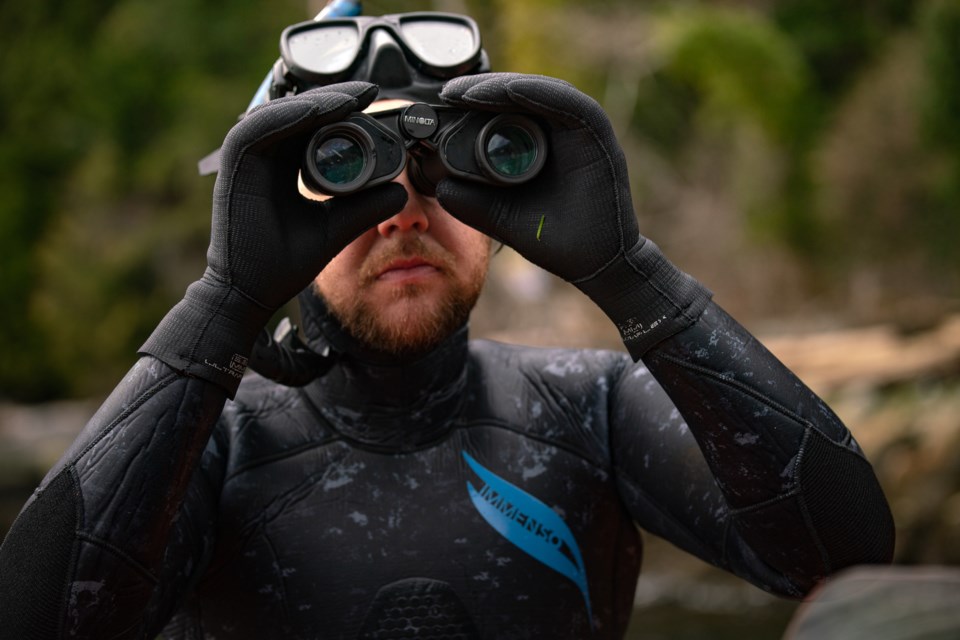Did you know that herring communicate with each other?
Herring, or Slhawt’, warn each other of predators and help each other navigate through underwater sounds and bubbles, according to a Pacific Wild fact sheet.
These communicative sounds are known as fast repetitive ticks (FRTs).
Herring also, in a way, communicate with humans by telling us how our marine habitat is doing through their abundance or lack thereof.
The 2023 Átl’ka7tsem/Howe Sound Marine Stewardship Initiative (MSI) annual herring survey results were recently published in the Átl'ka7tsem/Howe Sound Slhawt’/Herring Survey Report.
"It's not a ton of research yet, but we hope to be consistent and continue to do annual surveys. ... So, having this baseline, especially as we have other potentially impactful projects coming into [Howe] sound, being able to see how herring are impacted over the years, by a number of different pollutants, or different projects is important," said Ellika Cairns, project director, with MSI.
The goal is that the survey data be part of a baseline dataset that tracks the status and trends of slhawt’/herring spawn distribution, abundance, and timing, the report states.
"Such a dataset will be useful for future studies of slhawt’/herring in this region and provide a baseline to understand ecosystem responses to human impacts—development, resource extraction, and climate change,” reads the report.
All data is publicly available in the Marine Reference Guide.
The survey project is a partnership between the Sḵwx̱wú7mesh Úxwumixw (Squamish Nation), Ta na wa Yúus ta Stitúyntsam̓ (rights and title department), MSI, the Átl’ka7tsem/Howe Sound Biosphere Region Initiative, Squamish Streamkeepers, and St’a7mes School in School District 48.
Among other partners, the project was also helped by Sea Dog Expeditions, which provided a chartered research vessel and licensed skipper.
"It's not possible without our volunteers and our partners, and we're building on work that people have done previously, like John Buchanan, and the surveys that he was conducting. This work is really, really not possible without all of our partners," Cairns said.
This survey season, the crew expanded to include two Nation archaeological, cultural, environment (ACE) technicians to participate in each boat-based survey day, according to the report.
Survey says
The survey does not come to any grand-sweeping conclusions, but instead is an invitation for folks to access the data for themselves and learn more. Ideally, there will be increasing research in the Sound in the future.
"This work notably highlights the need for more consistent, long-term monitoring that identifies the intertidal zones that are potential and active sites for herring spawning," reads the report, which was written by Matthew Van Oostdam, MSI Slhawt’/Herring Survey project co-ordinator.
The 2023 surveys were conducted at 14 locations in Howe Sound.
Land-based estuary surveys were conducted from Feb. 16 to April 16.
Boat-based snorkel surveys were also done during that period.
The first spawn event was documented on Feb. 26 in the Cattermole Slough.
Eggs were found on the intertidal of the Oceanfront Squamish development as well as the Squamish Terminals Port.
The second noted spawn happened on about March 7 in the Skwelwil'em Squamish Estuary.
Another spawn was documented south of the Woodfibre site, within 500 metres of Woodfibre Creek, on March 24.
Over one day, "the survey crew documented 5.5 kms of shoreline with slhawt’/herring spawn of varying densities," the report notes.
The last documented spawn event was seen on April 7, in the Mamquam Blind Channel.
Anchovies?
On three separate occasions during the two boat-based surveys, crews spotted northern anchovy.
The first sighting was on March 10, at the Woodfibre site.
On April 14, even more northern anchovies were spotted a few kilometers south of the Woodfibre site.
Over the following two days, schools of them were documented at the mouth of the Mamquam Blind Channel and the Cattermole Slough.
The final observations of northern anchovies were made on May 1 near the Kwum Kwum (Defence Islands).
"I don't believe there's been much if any research on northern anchovy in the Sound, but that could be an interesting area of expansion," Cairns said.
Background
These surveys fill in part of a big gap of research in the Sound.
According to the MSI site, Fisheries and Oceans Canada (DFO) studied herring spawn abundance in Howe Sound from 1966 to 2001.
Some reporting was done by Ocean Watch in 2017 and 2020 and citizen scientist John Buchanan did his own herring surveys starting in 2010.
Volunteers for the 2024 survey season are being sought, Cairns said. There will be an information night sometime in January, she noted.
Anyone interested in volunteering or donating to this cause can find more information on the Átl’ḵa7tsem/Howe Sound Marine Stewardship Initiative website.


.png;w=120;h=80;mode=crop)

